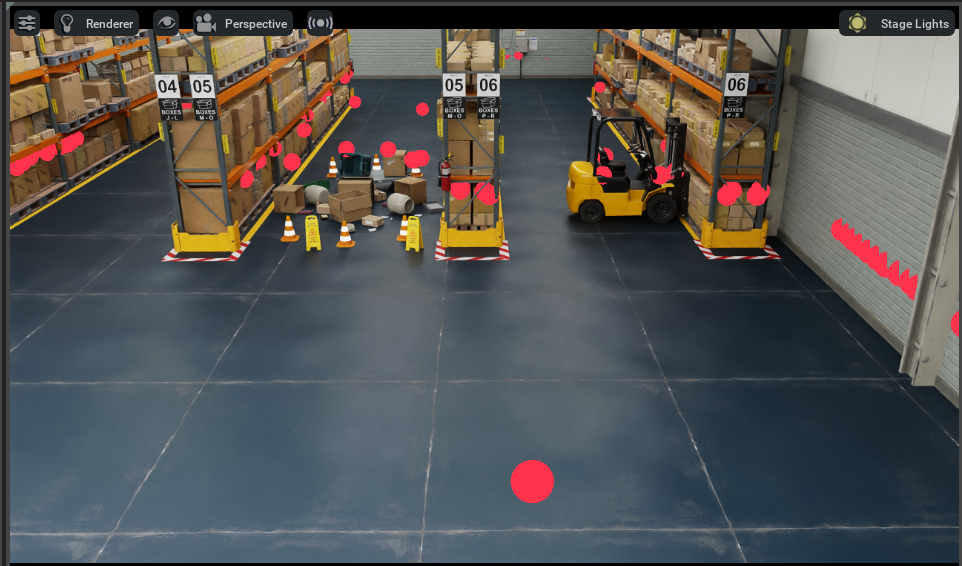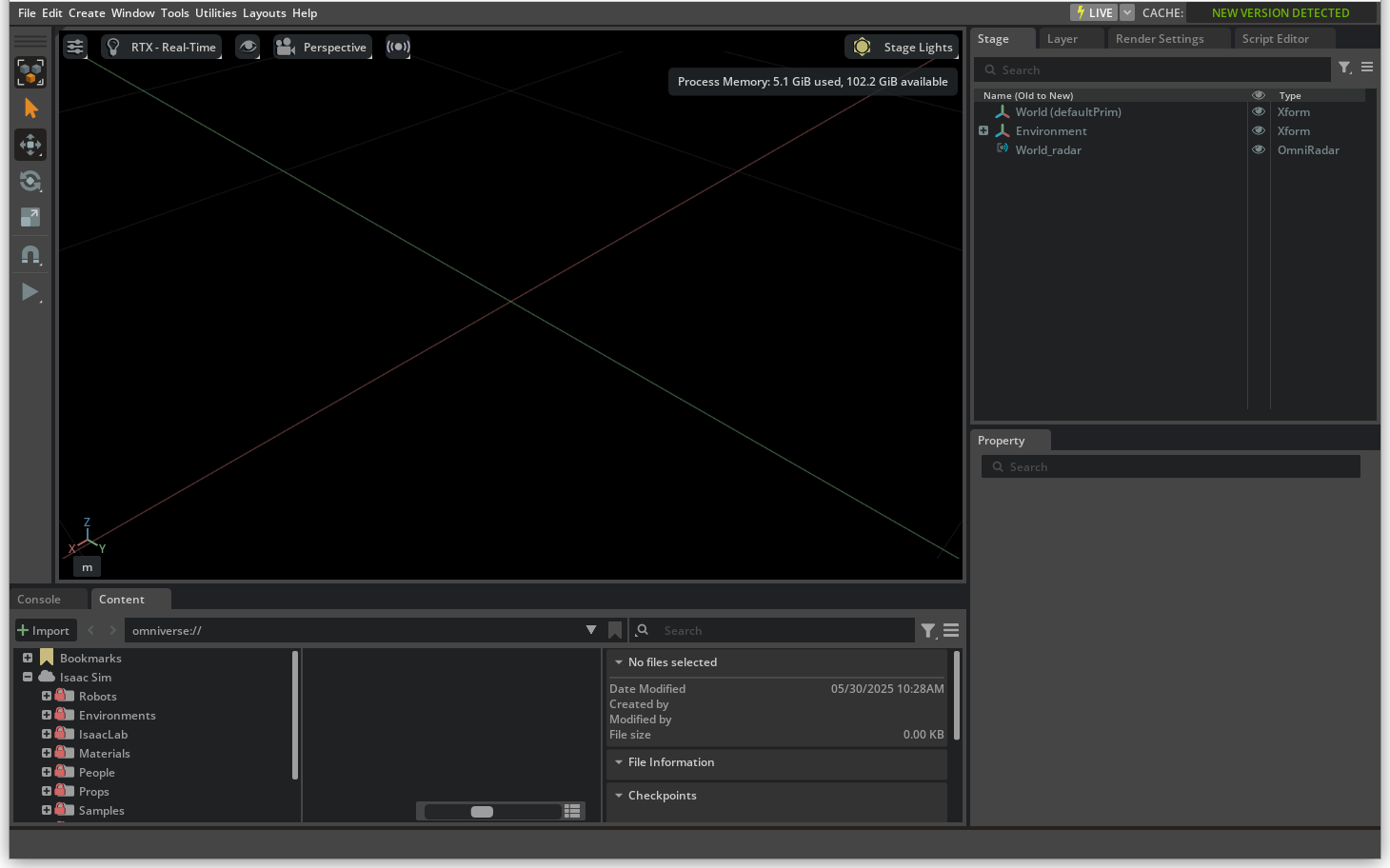RTX Radar Sensor#

RTX Radar sensors are simulated at render time on the GPU with RTX hardware.
Their results are then copied to the RtxSensorCpu rendering buffer for use.
Overview#
Note
In Isaac Sim 4.5 and earlier, RTX sensors were based on Camera prims. If the Camera prim’s
sensorModelPluginName attribute was set to omni.sensors.nv.radar.wpm_dmatapprox.plugin, then the
Camera prim was used to render the Radar. The Radar was configured using a JSON file whose
filename (without extension) was set in the Camera prim’s sensorModelConfig attribute, assuming
the file was present in a folder specified by the app.sensors.nv.radar.profileBaseFolder setting.
Support for Camera prims as RTX Radars was deprecated in Isaac Sim 5.0.
RTX Radars are rendered using OmniRadar prims, with the OmniSensorGenericRadarWpmDmatAPI schema applied,
as configured by attributes on the prim. After attaching a render product to the OmniRadar prim, and setting
the GenericModelOutput AOV on the render product, the RTXSensor renderer will write Radar render results to the AOV.
How to Create an RTX Radar#
The isaacsim.sensors.rtx extension provides one API for creating RTX Radars. In addition, the omni.replicator.core
extension provides even lower-level APIs for creating OmnRadar prims (including batch creation) and attaching render
products to them.
Create an RTX Radar via Command#
The IsaacSensorCreateRtxRadar command creates
a generic OmniRadar prim with the appropriate schema(s) applied, or a Camera prim with the appropriate attributes
to support deprecated workflows.
import omni
from pxr import Gf
# Specify attributes to apply to the ``OmniRadar`` prim.
sensor_attributes = {'omni:sensor:tickRate': 10}
_, sensor = omni.kit.commands.execute(
"IsaacSensorCreateRtxRadar",
translation=Gf.Vec3d(0, 0, 0),
orientation=Gf.Quatd(1, 0, 0, 0,),
path="/radar",
parent=None,
visibility=False,
variant=None,
force_camera_prim=False,
**sensor_attributes,
)
The example command above creates an OmniRadar prim in the stage at the
specified translation with the specified orientation, at path /radar. The prim is set to be invisible
in the stage. The prim’s omni:sensor:Core:tickRate attribute is set to 10 Hz from 20 Hz (default).

Setting force_camera_prim to True will instead create an invisible Camera prim at the specified translation
and orientation.
Annotators can then be attached to the OmniRadar prim to visualize the Radar results.
Details about available annotators can be explored here.
Sensor Materials#
The material system for RTX Radar allows content creators to assign sensor material types to partial material prim names on a USD stage. Radar return behavior depends on material properties (eg. emissivity, reflectivity, etc.), as described below.
Standalone Examples#
For examples of creating RTX Radar see the examples:
./python.sh standalone_examples/api/isaacsim.util.debug_draw/rtx_radar.py
Note
See the Isaac Sim Conventions documentation for a complete list of Isaac Sim conventions.